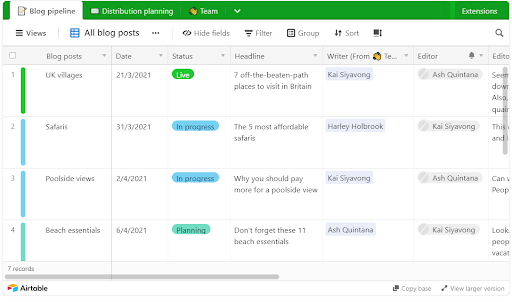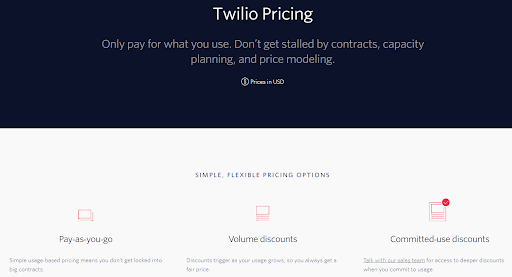Just two decades ago, enterprise companies had to invest in expensive on-premise software for things like customer relationship management (CRM), employee tracking, business analytics, and so on.
In the last decade, however, things moved to the cloud which made it possible to bring all business functions online through Software-as-a-Service (SaaS) products. Today, over 80% of businesses make use of SaaS tools that help them scale rapidly without expensive overheads.
As more and more businesses adopt SaaS solutions for various use cases, the SaaS industry continues to grow by leaps and bounds. And just like every other technological advancement, the industry is undergoing constant changes with each passing year. If you’re into the business of software, staying in the know about the latest trends helps you plan ahead and plan better.
SaaS development services can also be of use to your business to get a custom solution in place.
So, while SaaS is a fast-evolving industry with many new trends emerging each year, here are our top three picks for 2023.
Trend #1: Vertical SaaS will reach new heights
Vertical SaaS refers to products that are tailored to specific industries or vertical markets. These SaaS solutions are designed to meet the unique needs and challenges of particular businesses or niches, such as healthcare, finance, retail, or education.
Unlike horizontal SaaS solutions that offer generic solutions that cater to all industries (such as Slack), vertical SaaS solutions are specialized and offer deeper functionality for customers in specific niches.
Most (and the biggest) cloud platforms are horizontal SaaS — HubSpot, Salesforce, Xero, Mailchimp, Shopify, Dropbox, etc. But according to a recent report, the number of vertical SaaS companies grew by at least 28% between 2020 and 2021, and this growth is likely to burgeon.
These numbers make sense given the benefits of highly specialized niche solutions, such as:
- Easy integrations with industry-specific processes and systems.
- Built-in compliance, regulatory, and industry standards.
- Industry-specific analytics and metrics that help improve business performance and decision-making.
For example, dental practice management software would offer specialized features that allow dentists to better run their practice, such as appointment scheduling, document assembly, and patient CRM. So, for dentists who run their own clinics, adopting such a SaaS platform over a generic tool that offers unnecessary features for a higher price is a no-brainer.
Thus, by understanding their highly targeted customers’ specific needs and pain points, vertical SaaS products are more likely to be adopted, profitable faster, and have stronger customer relationships, making them an important SaaS trend for 2023.
Trend #2: Low-code and no-code will become increasingly mainstream
Coding software from the ground up is quickly becoming a thing of the past. Today, low-Code and No-Code (LCNC) platforms are enabling developers and non-technical business users alike to build apps and websites with little-to-no manual coding.
Recent reports suggest that the low-code SaaS industry could be worth $187 billion by 2030. Furthermore, Gartner predicts 65% of all application development would be via LCNC apps by 2024, and 66% of big companies would use at least four low-code platforms.
And there are plenty of reasons why these predictions can turn out to be true. LCNC apps enable:
- Faster and more efficient development
- Faster innovation, prototyping, and time-to-market
- Easier maintenance
- More flexibility with APIs and integrations
Currently, many enterprise companies are adopting low-code SaaS tools to build useful internal apps with minimal IT involvement. For example, if a big, globally distributed marketing team needs an interactive and centralized blog editorial calendar to streamline their content ops, they can build one for themselves with drag-and-drop tools like Airtable and Retool.
Likewise, finance teams can build an expense-tracking app, development teams can build internal software for product development, HR teams can build an internal employee self-service chatbot, and so on.
All in all, low-code and no-code SaaS tools will see increased adoption for both internal and external use cases (such as building new websites) from businesses.
Along with this, you need to test SaaS applications effectively to check if it is working correctly or not. It helps to deliver an delightful user experience that gives you a competitive edge and drives long-term success in an increasingly competitive market.
Trend #3: A shift from cost-effective to usage-based pricing
Like with any fast-expanding market, prospects are spoilt for choice. Plus, as we touched upon in the first trend, no customer wants to pay for features they might not use and commit to an expense over a contractual period wherein they’re not about how much value they’ll generate from the tool.
And so, while the traditional tiered-subscription pricing broke down barriers to digital transformation for businesses by allowing them to choose packages depending on their needs, it still leaves room for improvement.
Consequently, an increasing number of SaaS businesses are moving to a more customized pricing model of usage-based pricing (UBP) in order to offer better price-value alignment. You can think of it as pay-per-use or pay-as-you-go pricing that lets customers pay only for the features/resources they use rather than a fixed monthly fee.
In fact, 45% of SaaS companies offered some form of UBP in 2021, up from 34% in 2020.
While still an evolving pricing model, usage or value-based pricing eliminates futile customer expenses by tying the money spent to the value gained from using the SaaS product. On the other hand, SaaS companies can use this pricing strategy as a growth lever to acquire customers and reduce churn.
Twilio and Agora are a couple of prominent examples of SaaS companies that have adopted UBP.
Moreover, SaaS companies incorporating UBP-oriented pricing models tend to have higher net dollar retention rates of 120%, averaging around 10% higher than their traditional counterparts.
Still, the traditional tiered pricing model is and will continue to be ubiquitous thanks to its familiarity in the customers’ minds and its ability to drive predictable revenue for SaaS brands.
Some SaaS companies are opting for a blended model wherein customers can still select a subscription tier, but they don’t have to opt for a higher plan when they exceed their preset limits. Instead, they can pay overages for the additional resources used. This helps improve the customer experience by enabling customers to get more out of the product without forcing them to change their tier.
Wrapping up
The SaaS industry continues to evolve, providing new and innovative solutions to meet the growing needs of businesses embracing digital transformation.
From an increased emphasis on security and privacy to the normalization of AI in everyday use cases, SaaS companies are spurring innovation to help businesses of all sizes streamline their online operations while cutting costs.
As the market continues to grow, it will be exciting to see how the SaaS industry continues to shape the future of business in 2023 and beyond.
Hazel Raoult is the Marketing Manager at PRmention, a digital PR agency for SaaS and Tech Businesses.



